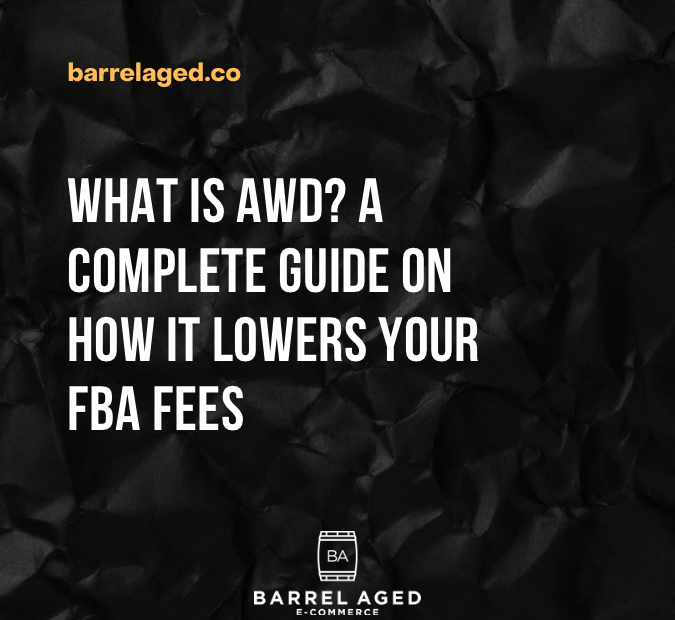What is AWD and what does AWD stand for?
AWD stands for Amazon Warehousing and Distribution. Amazon describes their new warehouse offering as, a low-cost bulk storage solution for your inventory that distributes to the Amazon store and other distribution channels. It is basically your extension to Amazon FBA Warehouse(s) that is the storage for the storage. With this new offering, Amazon basically recommends a 3 layer structure of warehousing:
First layer is your own manufacturing warehouse, where you temporarily store goods that you produce. Second layer is that you send your produced inventory to Amazon’s AWD warehouse for storage. And third layer is Amazon FBA warehouse. Once you are running low on inventory, Amazon FBA now automatically pulls inventory from your inventory that is stored at the AWD warehouse.
Why should you utilize AWD’s warehouses for your inventory?
The first major benefit for your business should be that you avoid those new placement and low inventory fees! AWD pricing covers FBA inbound placement, so there is no separate charge for this service. AWD’s auto-replenishment capability ensures your FBA inventory is kept in stock. Talk about a relief for Amazon Seller that just experienced the new fees!
AWD allows for Multi-channel distribution
The second Major benefit is that AWD can be utilized for multichannel fulfillment. You can pull inventory to ship it (with Amazon’s carrier) to your website customer. Amazon praises themselves by offering the AWD option that it lowers the cost of storage for businesses or sellers. Question only is, if you already have your own warehouse, and are paying for it currently, if it actually is a cheaper option.
What does that mean for Amazon Seller?
Each Seller now needs to decide if the options to reduce fees and untitling AWD in the process is worth it for them. Obviously for large manufacturer and companies, being able to use the warehouse from AWD vs their own could mean a large cost saving. For small business? It depends. If you are relaying on third party warehousing it could actually be a better option.
Is AWD the death for 3P warehouse providers?
At Barrel Aged, we don’t believe it is. Most 3P warehouse providers are presenting themselves as multi-channel warehousing option for ALL marketplaces and channels. Their business model is already diversified. For 3P companies that are depending on Amazon Sellers? Now that could be a different story, they probably are not happy with the new developments and offering by Amazon.
How can I avoid the Amazon placement Fee?
The only way you can avoid it (as we know so far), is by using Amazon’s AWD warehouse. It may required to think through your whole warehouse structure and strategy, because of these new fees and changes. Be aware that you cannot store any larger items or perishable items at AWD’s warehouses. Which means, that if you are a seller of said items, you can’t avoid the new fees. It might change in the future, but for now you might be stuck with the fees.
What does Barrel Aged think?
I think what Amazon put together is a great lesson for any corporate strategist. During the pandemic, Amazon build warehouse in the US like crazy. When you drove through the country you all the sudden saw Amazon warehouses EVERYWHERE! Obviously, eventually the pandemic ended, and Amazon realized that there were too many warehouse built or in the process of being built. Since the whole (e-commerce) industry slowed down, the demand for warehouses feel, and most likely Amazon couldn’t sell the warehouses without a loss. So what did they do? They added the AWD offering! A clever way of adding additional revenue, utilizing the warehouse space they already built, and even came up with a way to force sellers to utilize the new warehouses by adding new fees. Now, do we know for a fact that this is exactly how it happened? No, of course not. This is speculation and an outsider’s perspective.
As always, it is never a dull moment being a Seller on Amazon. It is a constant change, and the old saying of either change or die is still true. Selling on Amazon is a privilege and not a right. Every year you should do the math and see if selling on Amazon is still profitable for your business, and if not what changes are required. Right around 2016, Birkenstock made huge news by announcing that their shoes are not sold via Amazon. So really, every brand has the choice whether or not selling on Amazon is right for you.
